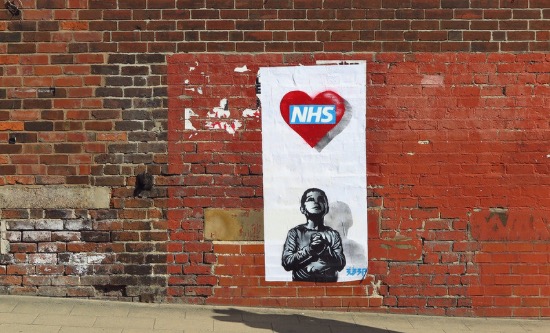
Prime Minister Johnson’s promise to ‘fix the crisis in social care once and for all’ when he became leader of the Tory party in summer 2019 has proved a sham. On 12 September he announced that the government will raise an additional £11.2bn a year for health and social care by increasing national insurance rates from 2022/23. In the meantime, the NHS will have to struggle through the remainder of the current year on the extra £5.4bn for NHS Covid-19 recovery announced a week earlier. However, all the proposed extra finance is grossly insufficient given the scale of the Covid-19 crisis, and there is no underpinning social care plan, only some figures on the back of a cigarette packet.
NHS backlog
With over 8,000 beds already occupied by Covid-19 patients, the NHS is facing a winter where a combination of Covid-19 and other flu-type viruses will result in soaring hospitalisation rates, derailing any plans to sort out the huge backlog of hospital treatments. The numbers waiting for hospital treatment stands now at a record 5.45 million, a million more than the pre-pandemic level. However, this could rise to 13 million because seven million fewer people joined the waiting list between March 2020 and May 2021 than would normally have been expected, and they will start to seek treatment in the months to come. It is estimated that to stop the waiting list for NHS treatment growing further over this parliament will require at least £13.3bn extra per year.
The issue is not just about immediate funding, but also staffing levels, and the need to train tens of thousands of nurses, doctors and other clinical staff for the future. The NHS workforce has to grow by 277,500 full-time equivalent staff by 2024/25, and by a third over the next ten years. But at the end of June 2021, there were 93,806 full-time equivalent vacancies across the NHS in England, with 38,952 for registered nurses, an increase of 12% from March. Britain has 50,000 fewer doctors than in equivalent EU nations and one of Europe’s lowest numbers of hospital beds per capita. Staff shortages on this level, the consequences of funding cuts in previous years, cannot be resolved at the drop of a hat.
NHS England data on bed occupancy show the current pressure on services. Hospitals work most safely and effectively at bed occupancy levels no higher than 85%. For the first quarter of 2021/22, the bed occupancy rate was 83.8% (of the 123,707 beds available), nearly as high as the same quarter in 2019/20 at the start of the pandemic. Occupancy in 82 trusts exceeded 85%; 25 were over 90% and six over 95%.
The reality is that the NHS will be unable to cope. The government has said that the NHS has to find £500m from within its existing budgets to help fund the pitiful 3% pay offer it has made following the uproar over its original suggestion of 1%; even now, however, the 3% proposal excludes a large number of clinical staff. With the 1.25% rise in national insurance rates, inflation running at 3% and expected to rise further with energy price increases over the winter, the 3% is in reality a further pay cut.
Social care plan: smoke and mirrors
Of the promised £11.2bn, only a miserable £1.8bn will be available for social care for the next three years. But spending has been cut by £600m per annum below the 2010 level, equivalent to 7.5% per person over that period. Despite the increasing need from an ageing population, the government proposals do not factor in the need to pay care staff more. With 70% of care staff being paid less than £10 an hour, and a quarter on zero-hours contracts, there are now about 112,000 staff vacancies in the care sector. With the likes of Amazon offering 30% more pay, the number of vacancies is predicted to rise to about 170,000. The Health Foundation estimates that to meet existing need for social care, and to pay adequate wages to frontline staff, between £3.7bn and £7.9bn is required from 2022/23.
The most publicised element of Johnson’s ‘plan’ is a cap on life-time care costs of £86,000. From 2023, anyone with assets worth less than £20,000 will have their care costs covered by the state. Those with assets worth between £20,000 and £100,000 will have means-tested support. But such support will only cover the cost of a care home that an individual’s local authority is willing to pay for. It would not cover cost-of-living expenses in a care home such as meals. Nor would it cover a more expensive home, even if it would be more convenient. The cap of £86,000 needs to be compared to the costs of an average length of stay in a care home, which according to a BUPA study is £71,400, two and a half years at £550pw. This is well below the £86,000 cap. So not only will the state not have to cough up for the majority of care home residents, but setting the cap at £86,000 will primarily help those with the most wealth and ensure that their property interests are protected.
The ‘plan’ says nothing about the way care homes are run, or the fact that the sector is increasingly dominated by private equity companies whose chief aim is to extract profits from care home residents, and to this end rely on cheap and unskilled labour. A London School of Economics study concluded that the risk of death from Covid-19 in care homes in Britain was 13 times higher than similar institutions in Germany. This is a consequence of the pattern of care home ownership. Capitalism cannot provide adequate health or social care – the struggle is for a real welfare state, socialism.
Hannah Caller
Fight Racism! Fight Imperialism! No 284, October/November 2021




